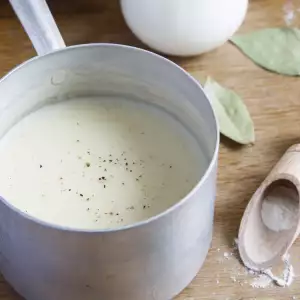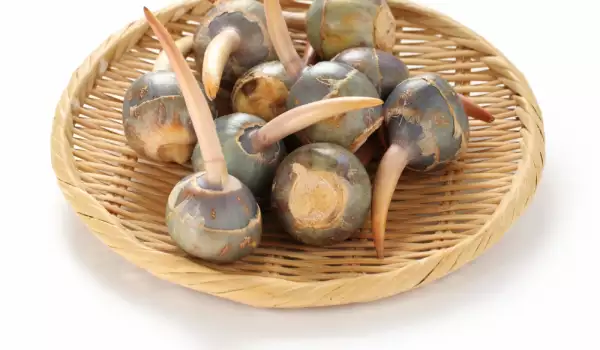Arrowroot (Marantha arundinacea) is a perennial plant, whose roots are used for food, as a thickening agent and as an additive in various medicines. Arrowroot originates from the topics of South America.
It has long been grown by the local people who developed an intensive method of extracting the usable starch from the rhizomes. They are washed, grated, soaked and crushed, finally passed through a sieve and dried.
When the Europeans first came upon arrowroot they saw how the natives placed a very high value on the root as a food source.
In modern times, arrowroot roots are factory dried to produce a powder that finds use in pharmaceuticals and cuisine. The powder looks quite similar to corn starch.
Composition of Arrowroot
Arrowroot is rich in vitamin A, group B vitamins, folic acid. Among the minerals, calcium, manganese and potassium are well represented. The amounts of protein and dietary fiber are also sufficient.
Choosing and Storing Arrowroot
Arrowroot is generally found in the form of starch. A 16 oz bag costs about $5, available online or in specialized stores. Store it in a dry and cool area.
Cooking with Arrowroot
The starch from arrowroot is mostly used to thicken sauces, as a filling for cakes and other confectioneries.
Like tapioca and corn flour, arrowroot is a popular and useful thickener.
Corn flour is exceptionally well-suited for thickening milk-based sauces, while arrowroot is better for thickening more sour liquids. Unlike corn flour, arrowroot has no smell and does not give a starchy taste to dishes.

Another reason why arrowroot is used in recipes is that it's incredibly easily digestible. Besides as a thickening agent, arrowroot can be used as a substitute for some of the flour in various sweets and crackers.
If you want to freeze a dish, it's best to use arrowroot as a thickener. Arrowroot is an appropriate thickener for many dishes because it will not change their taste.
Arrowroot is easier to work with at low temperatures, it tolerates acidic ingredients and prolonged cooking.
To use it as a thickener mix the arrowroot with equal parts water and then beat the porridge into the warm liquid for about 30 seconds. 1 tablespoon can thicken 1 cup of liquid.
Benefits of Arrowroot
Arrowroot's greatest advantage is that it is easily digestible. Its roots are used as a very effective treatment for diarrhea due to the high content of starch in them.
The roots also help gastrointestinal disorders, while the powder can be applied topically to the skin to relieve painful, irritated or inflamed mucosa.
The soft taste of arrowroot makes it suitable for alkaline diets. It's true that the starch is not very nutritious but many people have said that it helps relieve an irritated stomach.
Thanks to the vitamins and precious minerals found in arrowroot, it finds a well-deserved spot in healthy eating plans. Its advantages over corn starch are indisputable.
The only downside is that it's a little more expensive in comparison to corn starch and it also can't be used to thicken milk sauces because it ruins their taste and makes them fattier.








Comments